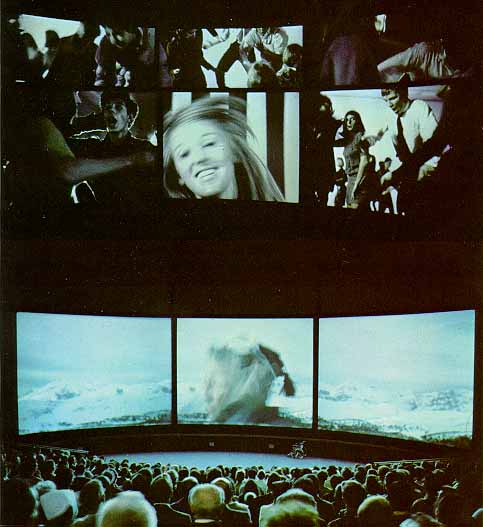By September Liu
On February 13th, Professor Malte Hagener delivered an informative and insightful speech at the Centre for Film Studies. Starting from the traditional cinematic historiography that characterises the late 1960s as a bifurcated landscape, he introduced many impressive split-screens and multi-screen images found in Hollywood between 1966 and 1970 and present at the 1967 world exposition in Montreal, Quebec. Following the discussion, staff and students in attendance voiced multiple thoughts, which opened constructive dialogues between the audience and the speaker.
Challenging the binary opposition of the established historical writing on the late 1960s, Professor Hagener instead offered a novel historiography that was entangled, transnational, and intermedial. The late 1960s was a time when European art house cinema was enjoying a significant increase in reputation, brought about by many brand-name auteurs contributing on a global scale, whereas Hollywood was formally and ideologically rejuvenated by the young minds of the New Wave. Traditional film history thus mapped cinema in late 1960s on an antithetical premise. Questioning this divergent? landscape, Professor Hagener shifted perspectives to investigate split-screen and multi-screen images. A broader, or expanded, cinema history was proposed, which encompassed, as he suggested, “expanded cinema, the global history of documentary, big-budget mainstream filmmaking – as well as the history of exhibition beyond the traditional movie history.”
Professor Hagener presented many interesting practices of split screen and multi-screen images in the late 1960s. Starting from the foregoing employment of split-screens for telephone talk, in Pillow Talk (Michael Gordon, 1959), Professor Hagener provided a thought-provoking picture of its late-1960s increased popularity in films such as Grand Prix (John Frankenheimer, 1966) and The Boston Strangler (Richard Fleischer, 1968). Another important example was Professor Hagener’s remarkable presentation of the Expo 1967 in Montreal, where screens were fragmented and juxtaposed to emphasise the intricate relations between? images, either compounding, paralleling, or contrasting.
Professor Hagener’s speech on “multiple screens and multiple cinemas” raised multiple opinions from the audience. Questions concerning the legitimacy of establishing 1967 as a watershed were raised, and some made enquiries into the potential disparities of multiplicity in images and historiography. Others expressed anxious concerns that the miscellaneous screens, like “black mirrors”, had already surrounded people and complicated the study on split-screen visuality. Revisiting technology’s impacts on cinematic images, Professor Hagener suggested that off-screen sound and captioned words were now substituting for split-screen images and forming new idioms, as phone calls and text messages have become naturalised in society. In other words, multiple voices are competing with the historic readings of multiple images and multiple cinemas par excellence.
Professor Malte Hagener is a professor in history, aesthetics, and theory of film at Philipps-Universtat Marburg. A founding member of NECS, he also takes the role of an editor at NECSUS – European Journal of Media Studies. His academic books include Moving Forward, Looking Back: The European Avant-garde and the Invention of Film Culture (2007), Film Theory: An Introduction through the Senses (with Thomas Elsaesser, 2010), The Emergence of Film Culture (as editor, 2014), and The State of Post-Cinema: Tracing the Moving Image in the Age of Digital Dissemination (co-edited with Vinzenz Hediger and Alena Strohmaier, 2016).

